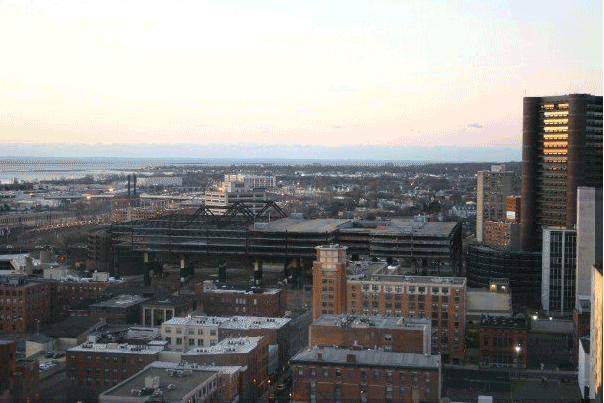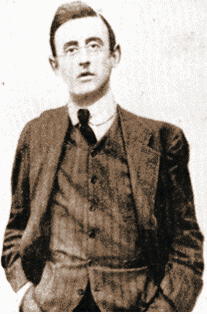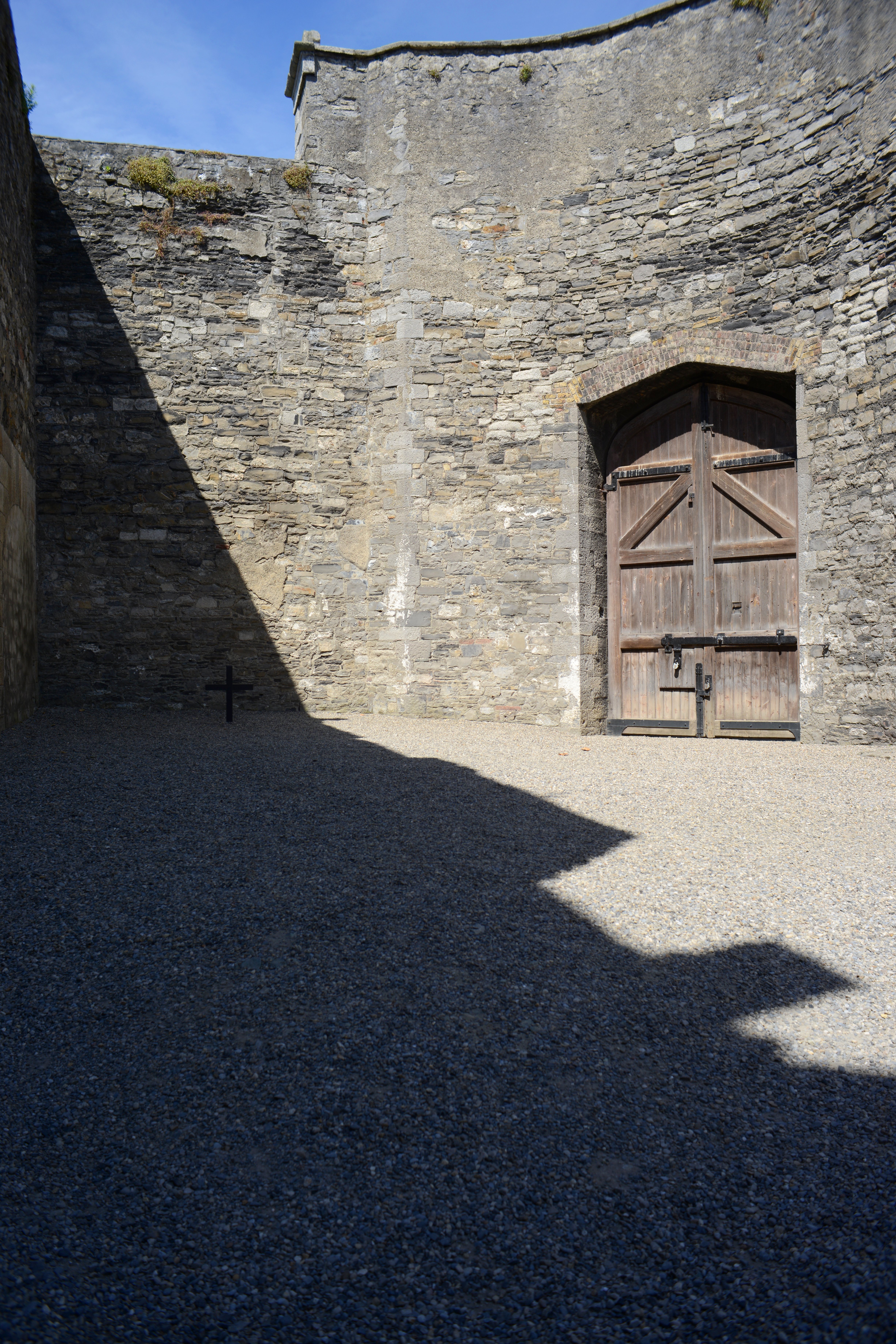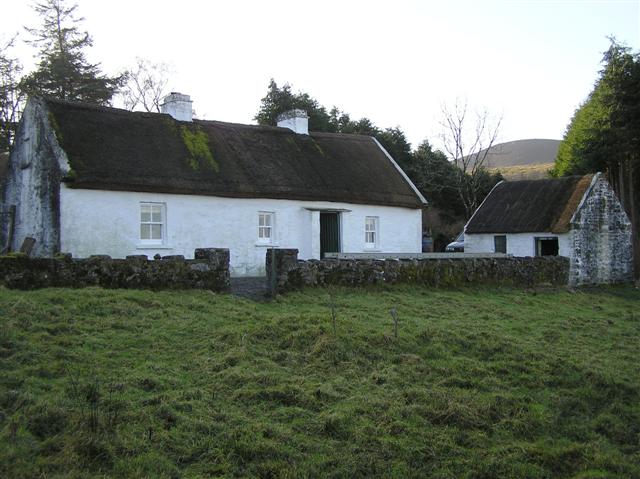|
Ballymun Flats
The Ballymun Flats referred to a number of flats—including the seven Ballymun tower blocks—in Ballymun, Dublin, Ireland. Built rapidly in the 1960s, there were 36 blocks in total, consisting of seven 15-storey, nineteen eight-storey, and ten four-storey blocks. The complex was built in a Corbusian style known as towers in the park, which was popular in European and American cities in the mid-20th century. The 15-storey blocks actually had 17 storeys, including the entrance floor and a plant room on their roofs. Joseph Plunkett tower, named after one of the signatories of the Proclamation of the Irish Republic, was typical of the taller tower blocks. It was a 42-metre, 8,500-tonne building that housed 90 families in 30 three-, two-, and one-bedroom units. The entire complex was demolished in the early 21st century. By October 2013, there were just three remaining blocks, all of which were empty. The last block was demolished in September 2015. History The Ballymun Flats ... [...More Info...] [...Related Items...] OR: [Wikipedia] [Google] [Baidu] |
Ballymun, Dublin
Ballymun () is an outer suburb of Dublin, Ireland, at the northern edge of the Northside, the green-field development of which began in the 1960s to accommodate a housing crisis in inner city areas of Dublin. While the newly built housing was state-of-the-art at the time, comprising high-rise tower blocks and flat complexes, residents were moved in years before shops, schools and other infrastructure were fully ready, and the area became well known for both a strong community spirit and considerable social challenges. Ballymun has several sub-districts such as Sillogue, Coultry, Shangan and Poppintree, and is close to both the Republic of Ireland's only IKEA store and to Dublin Airport. The area is the source of one Dublin river, and parts lie in the floodplain of another, and there are a number of parks. In 1997, a regeneration plan was announced, which led to demolition of the flats over time and their replacement by new low-rise housing, along with some civic amenities, a n ... [...More Info...] [...Related Items...] OR: [Wikipedia] [Google] [Baidu] |
Dublin Metro
MetroLink is a proposed metro line for the city of Dublin. It was first recommended in the then Irish Government's 2005 Transport 21 transport plan. The sole line is proposed to run from Estuary on Dublin's northside to Charlemont on the south of the city, with stops including Dublin Airport, O'Connell Street and St. Stephen's Green. The proposed route consists of mainly uncovered sub-surface track in the Swords area, a tunnel under Dublin Airport, further uncovered sub-surface track until the M50, with a deep bore tunnel running from Northwood to Charlemont. While, as of March 2018, the line was planned to begin operation in 2027, as of September 2021, government representatives indicated that this target "was never likely to be achievable" with several reports indicating that the project would "not be completed until at least 2032". As of July 2022, the project was proposed to begin construction in and that, "all going well" it could be in operation by 2035. History Initi ... [...More Info...] [...Related Items...] OR: [Wikipedia] [Google] [Baidu] |
The Joshua Tree
''The Joshua Tree'' is the fifth studio album by Irish rock band U2. It was produced by Daniel Lanois and Brian Eno, and was released on 9 March 1987 on Island Records. In contrast to the ambient experimentation of their 1984 release, ''The Unforgettable Fire'', the band aimed for a harder-hitting sound within the limitation of conventional song structures on ''The Joshua Tree''. The album is influenced by American and Irish roots music, and through sociopolitically conscious lyrics embellished with spiritual imagery, it contrasts the group's antipathy for the "real America" with their fascination with the "mythical America". Inspired by American experiences, literature, and politics, U2 chose America as a theme for the album. Recording began in January 1986 in Ireland, and to foster a relaxed, creative atmosphere, the group primarily recorded in two houses. Several events during the sessions helped shape the conscious tone of the album, including the band's participation ... [...More Info...] [...Related Items...] OR: [Wikipedia] [Google] [Baidu] |
Running To Stand Still
"Running to Stand Still" is a song by rock band U2, and it is the fifth track from their 1987 album, ''The Joshua Tree''. A slow ballad based on piano and guitar, it describes a heroin-addicted couple living in Dublin's Ballymun flats; the towers have since become associated with the song. Though a lot of time was dedicated to the lyrics, the music was improvised with co-producer Daniel Lanois during a recording session for the album. The group explored American music for ''The Joshua Tree'', and as such, "Running to Stand Still" demonstrates folk rock and acoustic blues influences. The song was praised by critics, many of them calling it one of the record's best tracks. It has since been included in the regular set lists of four U2 concert tours, in two different arrangements and with several possible thematic interpretations. Background "Running to Stand Still" was written by U2 in the context of the heroin addiction epidemic in Dublin of the 1980s, much like "Bad" (and to s ... [...More Info...] [...Related Items...] OR: [Wikipedia] [Google] [Baidu] |
Uninterruptible Power Supply
An uninterruptible power supply or uninterruptible power source (UPS) is an electrical apparatus that provides emergency power to a load when the input power source or mains power fails. A UPS differs from an auxiliary or emergency power system or standby generator in that it will provide near-instantaneous protection from input power interruptions, by supplying energy stored in batteries, supercapacitors, or flywheels. The on-battery run-time of most uninterruptible power sources is relatively short (only a few minutes) but sufficient to start a standby power source or properly shut down the protected equipment. It is a type of continual power system. A UPS is typically used to protect hardware such as computers, data centers, telecommunication equipment or other electrical equipment where an unexpected power disruption could cause injuries, fatalities, serious business disruption or data loss. UPS units range in size from ones designed to protect a single computer without a ... [...More Info...] [...Related Items...] OR: [Wikipedia] [Google] [Baidu] |
Aircraft Warning Lights
Aviation obstruction lighting is used to enhance the visibility of structures or fixed obstacles which may conflict with the safe navigation of aircraft. Obstruction lighting is commonly installed on towers, buildings, and even fences located in areas where aircraft may be operating at low altitudes. In certain areas, some List of aviation regulatory bodies, aviation regulators mandate the installation, operation, color, and/or NOTAM, status notification of obstruction lighting. For maximum visibility and collision-avoidance, these lighting systems commonly employ one or more high-intensity Strobe light, strobe or LED lamp, LED devices which can be seen by Aircraft pilot, pilots from many miles away from the obstruction. Lamp types The lights generally come in two forms: * Red lamps that are either constantly illuminated or turn on and off slowly in a cycle of a few seconds. * White xenon flash lamps. Both types were in use in the United Kingdom until recently. New r ... [...More Info...] [...Related Items...] OR: [Wikipedia] [Google] [Baidu] |
Building Implosion
In the controlled demolition industry, building implosion is the strategic placing of explosive material and timing of its detonation so that a structure collapses on itself in a matter of seconds, minimizing the physical damage to its immediate surroundings. Despite its terminology, building implosion also includes the controlled demolition of other structures, such as bridges, smokestacks, towers, and tunnels. Building implosion, which reduces to seconds a process which could take months or years to achieve by other methods, typically occurs in urban areas and often involves large landmark structures. The actual use of the term "implosion" to refer to the destruction of a building is a misnomer. This had been stated of the destruction of 1515 Tower in West Palm Beach, Florida. "What happens is, you use explosive materials in critical structural connections to allow gravity to bring it down." Terminology The term ''building implosion'' can be misleading to laymen: Th ... [...More Info...] [...Related Items...] OR: [Wikipedia] [Google] [Baidu] |
Joseph Plunkett
Joseph Mary Plunkett (Irish: ''Seosamh Máire Pluincéid''; 21 November 1887 – 4 May 1916) was an Irish nationalist, republican, poet, journalist, revolutionary and a leader of the 1916 Easter Rising. Joseph Mary Plunkett married Grace Gifford in 1916, seven hours before his execution. Background Plunkett was born at 26 Upper Fitzwilliam Street in one of Dublin's most affluent districts. Both his parents came from wealthy backgrounds, and his father, George Noble Plunkett, had been made a papal count. Plunkett contracted tuberculosis (TB) at a young age and spent part of his youth in the warmer climates of the Mediterranean and North Africa. He spent time in Algiers where he studied Arabic literature and language and composed poetry in Arabic. He was educated at the Catholic University School (CUS) and by the Jesuits at Belvedere College in Dublin and later at Stonyhurst College, in Lancashire, England where he acquired some military knowledge from the Officers' Training Co ... [...More Info...] [...Related Items...] OR: [Wikipedia] [Google] [Baidu] |
James Connolly
James Connolly ( ga, Séamas Ó Conghaile; 5 June 1868 – 12 May 1916) was an Irish republican, socialist and trade union leader. Born to Irish parents in the Cowgate area of Edinburgh, Scotland, Connolly left school for working life at the age of 11, and became involved in socialist politics in the 1880s. Although mainly known for his position in Irish socialist and republican politics, he also took a role in Scottish and American politics. He was a member of the Industrial Workers of the World and founder of the Irish Socialist Republican Party. With James Larkin, he was centrally involved in the Dublin lock-out of 1913, as a result of which the two men formed the Irish Citizen Army (ICA) that year; they also founded the Irish Labour Party along with William O'Brien. Connolly was the long term right-hand man to Larkin in the Irish Transport and General Workers' Union (ITGWU) until taking over leadership of both the union and its military wing the ICA upon Larkin's departu ... [...More Info...] [...Related Items...] OR: [Wikipedia] [Google] [Baidu] |
Thomas Clarke (Irish Republican)
Thomas James Clarke ( ga, Tomás Séamus Ó Cléirigh; 11 March 1858 – 3 May 1916) was an Irish republican and a leader of the Irish Republican Brotherhood. Clarke was arguably the person most responsible for the 1916 Easter Rising. A proponent of armed struggle against British rule in Ireland for most of his life, Clarke spent 15 years in English prisons prior to his role in the Easter Rising, and was executed by firing squad after it was defeated. Early life Clarke was born at Hurst Castle near Milford-on-Sea in England, to Irish parents, Mary Palmer and James Clarke, who was a sergeant in the British Army. He had one brother, Joseph. In 1865, after spending some years in South Africa, Sgt. Clarke was transferred to Dungannon, County Tyrone, Ireland, and it was there that Tom grew up.Ryan (2014), p. 42 Irish Republican Brotherhood In 1878, at the age of 20, he joined the Irish Republican Brotherhood (IRB) following the visit to Dungannon by John Daly, and by 1880 he w ... [...More Info...] [...Related Items...] OR: [Wikipedia] [Google] [Baidu] |
Éamonn Ceannt
Éamonn Ceannt (21 September 1881 – 8 May 1916), born Edward Thomas Kent, was an Irish republican, mostly known for his role in the Easter Rising of 1916. Background Ceannt was born in the little village of Ballymoe, overlooking the River Suck in County Galway. His parents were James Kent (4 July 1839 – 1895) and Joanne Galway. (They were married on 5 July 1870.) He was the sixth of seven children, the others being William, Michael, Richard, Nell, John and James. His father, James Kent was a Royal Irish Constabulary officer. Stationed in Ballymoe, in 1883 he was promoted and transferred to Ardee, County Louth. When his father retired from the force, the family moved to Dublin. They were a very religious Catholic family and it has been said that Ceannt's religious teaching as a child stayed with him for the rest of his life. Two events that evoked nationalism at the end of the 19th century were the 1798 commemoration and the Boer War in South Africa. Éamonn became interes ... [...More Info...] [...Related Items...] OR: [Wikipedia] [Google] [Baidu] |
Seán Mac Diarmada
Seán Mac Diarmada (27 January 1883 – 12 May 1916), also known as Seán MacDermott, was an Irish republican political activist and revolutionary leader. He was one of the seven leaders of the Easter Rising of 1916, which he helped to organise as a member of the Military Committee of the Irish Republican Brotherhood (IRB) and was the second signatory of the Proclamation of the Irish Republic. He was executed for his part in the Rising at age 33. Brought up in rural County Leitrim, he was a member of many associations which promoted the cause of the Irish language, Gaelic revival and Irish nationalism in general, including the Gaelic League and (early in his career) the Irish Catholic fraternity the Ancient Order of Hibernians. He was national organiser for Sinn Féin, and later manager of the newspaper '' Irish Freedom'', started in 1910 by Bulmer Hobson and others. Early life Mac Diarmada was born John MacDermott in Corranmore, close to Kiltyclogher in County Leitrim, an ... [...More Info...] [...Related Items...] OR: [Wikipedia] [Google] [Baidu] |

.jpg)








